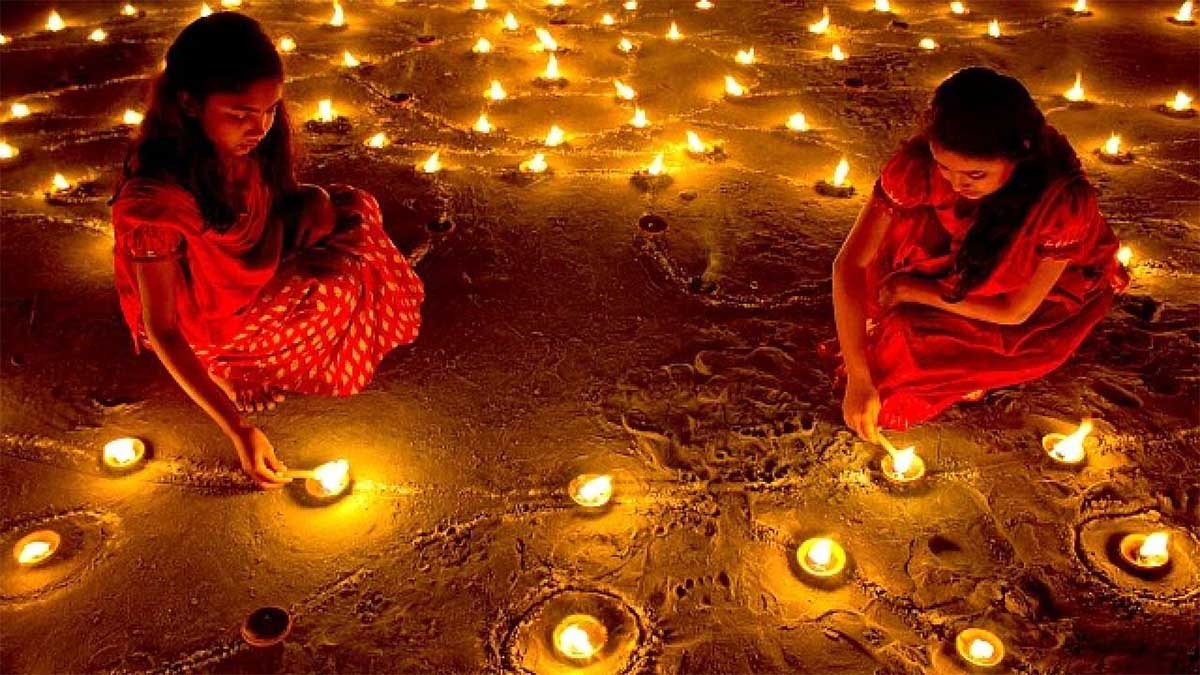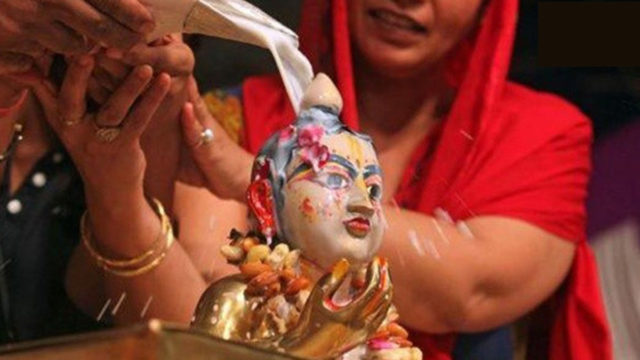Narak Chaturdashi is an integral part of the festival of Diwali. It is celebrated just the day before Diwali, on the day of Chhoti Diwali. The festival is referred to by different names in various parts of India, some of them being Roop Chaudas, Naraka Nivaran Chaturdashi, and Bhoot Chaturdashi. Homes are lit up with diyas and other lights. People adorn new clothes and spend the day together with friends and families at home or visit nearby temples to offer their prayers, or both. This year, the festival will be celebrated on 23rd October.
Narak Chaturdashi Story & Significance
Chhoti Diwali or Narak Chaturdashi is celebrated on the second or third day of Diwali, just one day prior to the main day of the festival. To be more specific, the name Kali Chaudas, another name for Narak Chaturdashi, is derived from the words “Kali” implying “dark” and “Chaudas” denoting “fourteenth”. The name is derived from the day that the festival is celebrated – fourteenth day of the dark half of the month of Kartik during Chaturdashi Tithi.
The name is derived from the day that the festival is celebrated – fourteenth day of the dark half of the month of Kartik during Chaturdashi Tithi.
Another Narak Chaturdashi significance is drawn from the times of Dwaper Yuga when Narakasur, the demon king, had grown to be so powerful that he’d started misusing the power and tormenting everyone, all the Gods as well as humans on the earth. He had captured 16,000 princesses from the kingdoms he had overpowered with the intention of marrying all of them. After receiving an appeal to save the earth from the demons, Lord Krsihna and his wife Satyabhama killed Narakasur and released the captives. After being defeated, Narakasur asked for a last boon from Satyabhama who happened to be his mother from a previous avatar – the boon that this day will be celebrated with colourful lights and firecrackers.
After being defeated, Narakasur (the demon king) asked for a last boon from Satyabhama who happened to be his mother from a previous avatar – the boon that this day will be celebrated with colourful lights and firecrackers.
The significance of Chhoti Diwali and Narak Chaturdashi story is to uproot all evil from inside and around us and usher the goodness of light and positivity into our lives. As a result, some devotees observe the ritual of offering pujas to the Goddess of darkness and to Veer Vetal.
Narak Chaturdashi Celebrations
According to folklore, Narakasur is believed to have asked Lord Krishna for a boon. He had asked that anyone who takes an auspicious bath or mangalsnan on this day will not suffer in hell. He was granted the boon by Lord Krishna and, from this day on, devotees started taking a bath before daybreak on the dark fortnight of Ashwin. That is how the celebrations of the day begin.
Some also believe that when Lord Krishna returned home with a tilak from the slain demon Narakasur’s blood on his forehead, Nanda gave him an auspicious bath. The women expressed their happiness by doing ovalani or moving lamps around his face.
Narak Chaturdashi (Chhoti Diwali) Celebrations
1. Early Morning Holy Dip
Being the harvest festival, people massage themselves with herbal oils like til (sesame) oil before taking a holy bath, known as abhyanga snan, early in the morning in a sacred river.
Being the harvest festival, people massage themselves with herbal oils like til (sesame) oil before taking a holy bath, known as abhyanga snan, early in the morning in a sacred river. It is believed that this oil will protect them from the clutches of misfortune and poverty by washing away sins and negative vibes. It is also said that this improves blood circulation and also improves the health and texture of the skin. Alternatively, a paste made from besan, kesar oil, milk, some aromatic oil, haldi, and chandan can be massaged all over the body as an ubtan before washing it away with cold water.
2. Dressing Up In New Clothes
It signifies new beginnings, a fresh and positive start to the year ahead.
As on all auspicious days, wearing new clothes and ornaments after a holy bath is mandatory. It signifies new beginnings, a fresh and positive start to the year ahead. And it is the same for this auspicious day as well. That apart, Choti Diwali rangoli is an essential element of the festivities.
3. Worship Lord Krishna
Paying obeisance to Lord Krishna by offering mantras and flowers is considered essential to receive his divine blessings.
Paying obeisance to Lord Krishna by offering mantras and flowers is considered essential to receive his divine blessings. Some devotees also offer respect to the deity of their clan to overcome negative forces.
4. Tantrics Should Learn Mantras
Some believe that people who want to be associated with tantric activities should initiate themselves to learning the relevant mantras on this day.
Everything You Need To Know About Narak Chaturdashi (Chhoti Diwali) Puja Vidhi & Celebrations
- Keep a chauki on the place you’ve designated for performing the Narak Chaturdashi Puja and spread a red cloth on the flat surface.
- Place Lord Ganesha and Goddess Lakshmi’s photograph or idols on the chauki.
- Next, place a small plate on it and keep some silver coins in it.
- Prepare a puja thali comprising 11/21 earthen diyas, pour mustard or til oil in them. Then, place cotton wicks in them vertically in a way that half of a wick is submerged in the oil while the other half stays outside.
- Keep the thali on the chauki.
- Use the roli to draw a swastika at the centre of the thali and then place a four-faced earthen lamp at the centre of the swastika.
- Place some sugar in each of the lamps. Alternatively, you can also use murmura (puffed rice), kheel, or makhana (fox nuts).
- Light the four-faced lamps first, followed by all the other lamps in the thali. It is said that when you burn the lamp of Yama as per Narak Chaturdashi puja vidhi, everyone belonging to your household should strictly stay indoors and not venture outside.
- Now it’s time to start performing the Diya Pujan. Put tilak on Lord Ganesha, Goddess Lakshmi, and Goddess Saraswati. Then, stick some rice on the tilak.
- Do puja of the silver coins with rice and roli, followed by a puja for all the earthen lamps.
- Next is the time for Ganesh Lakshmi Panchopchar puja.
- Show the earthen lamp to the deities and then the dhoop (frankincense sticks).
- Next, offer itra to the deities, followed by sweets and then flowers.
- Leave the four-faced lamp in the thali and place the remaining seven lamps outside the main entrance and other places around your house.
- Recite Lakshmi mantra “Shreem Swaha” at least 108 times.
- Offer jap in the lotus feet of Goddess Lakshmi to usher in peace and prosperity to you and your family with the Narak Chaturdashi Puja.
While you wait for the main day of Diwali with bated breath, don’t miss out on the auspicious rituals of Choti Diwali. And can the day be ever complete without Choti Diwali rangoli? Of course, not! So, go ahead and celebrate the day in full swing, shraddha, and festive fervour and lay the foundation to a happy, peaceful, healthy, and wealthy life ahead.
Open up like never before and participate in conversations about beauty, entrepreneurship, mental health, menstrual & sexual health, and more. Desi women, join our community NOW!


